Little Egret, Kleine Zilverreiger, Seidenreiher, Garça-branca-pequena, Garceta Común
Spotted in the Alentejo region of Portugal. Little Egret sound
The Little Egret (Egretta garzetta) is a small white heron. It is the Old World counterpart to the very similar New World Snowy Egret.

More photos at the bottom of this page.
There are at least two subspecies of Little Egret. The nominate subspecies E. g. garzetta occurs in Europe, Africa and Asia. E. g. nigripes breeds in Indonesia and Australasia. Those in Australia are sometimes thought to represent a third subspecies E. g. immaculata.
Several other egret taxa have at times been classified as subspecies of the Little Egret in the past but are now regarded as separate species. The Western Reef-Egret, Egretta gularis occurs on the coastline of West Africa (race gularis) and from the Red Sea to India (race schistacea). The Dimorphic Egret, Egretta (garzetta/gularis) dimorpha is found in East Africa, Madagascar, the Comoros and the Aldabra Islands.
The adult Little Egret is 55–65 cm long with an 88–106 cm wingspan. It weighs 350–550 grams. Its plumage is all white. It has long black legs with yellow feet and a slim black bill. In the breeding season, the adult has two long nape plumes and gauzy plumes on the back and breast. The bare skin between the bill and eyes becomes red or blue. Juveniles are similar to non-breeding adults but have duller legs and feet. The subspecies garzetta has yellow feet and a bare patch of grey-green skin between the bill and eyes, whereas nigripes has yellow skin between the bill and eye and blackish feet.
Little Egrets are mostly silent but make various croaking and bubbling calls at their breeding colonies and produce a harsh alarm call when disturbed.
Its original breeding distribution was large inland wetlands and coastal wetlands in warm temperate parts of Europe, Asia, Africa, Taiwan, and Australia.
In warmer locations, most birds are permanent residents; northern populations, including many European birds, migrate to Africa and southern Asia. They may also wander north after the breeding season, which presumably has led to this egret’s range expansion.
The Little Egret has now started to colonize the New World. The first record there was on Barbados in April 1954. It began breeding on the island in 1994. Birds are seen with increasing regularity and have occurred from Suriname and Brazil in the south to Newfoundland and Quebec in the north. Birds on the east coast of North America are thought to have moved north with Snowy Egrets from the Caribbean.
Until the 1950s, the Little Egret was restricted to southern Europe. Over the next few decades it became increasingly common in western France and later on the north coast. It bred in the Netherlands in 1979 with further breeding in the 1990s.
In Great Britain it was rare until the late twentieth century and almost certainly did not breed. In contrast, it has for just over a decade now become a regular breeding species and is commonly sighted, often in large numbers at favoured coastal sites. The first breeding record is generally accepted as having been on Brownsea Island in Dorset in 1996, although it has been claimed that the species bred in Sussex in the 1970s. There are now several colonies across southern England and the species bred in Wales for the first time in 2002.
In Ireland the species bred for the first time in 1997 at a site in County Cork.
The Little Egret nests in colonies, often with other wading birds, usually on platforms of sticks in trees or shrubs or in a reedbed or bamboo grove. In some locations such as the Cape Verde Islands, the species nests on cliffs. Pairs defend a small breeding territory, usually extending around 3–4 m from the nest. The three to five eggs are incubated by both adults for 21–25 days to hatching. They are oval in shape and have a pale, non-glossy, blue-green colour. The young birds are covered in white down feathers, are cared for by both parents and fledge after 40 to 45 days.
This egret stalks its prey in shallow water, often running with raised wings or shuffling its feet. It may also stand still and wait to ambush prey. It eats fish, insects, amphibians, crustaceans, and reptiles.
At one time, the plumes of the Little Egret and other egrets were in demand for decorating hats. They had been used for this purpose since at least the 17th century but in the 19th century it became a major craze and the number of egret skins passing through dealers reached into the millions. Egret farms were set up where the birds could be plucked without being killed but most of the supply was obtained by hunting which reduced the population of the species to dangerously low levels (stimulating the establishment of Britain’s Royal Society for the Protection of Birds in 1889). Now conservation laws protect this species, and the population has rebounded strongly.



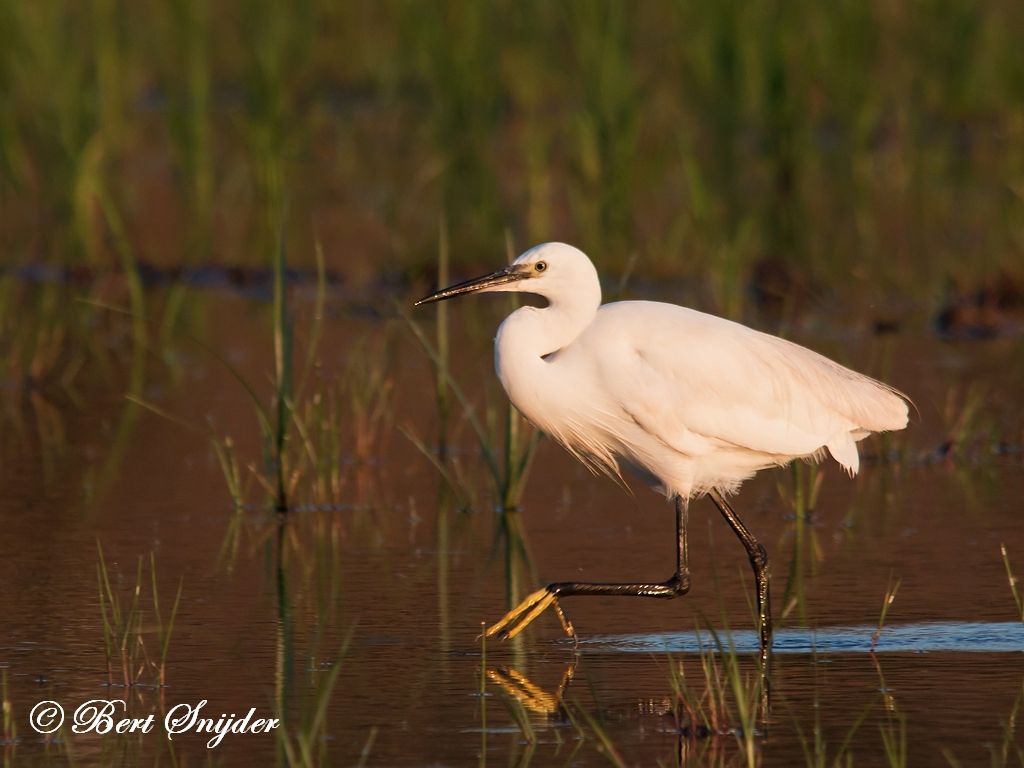
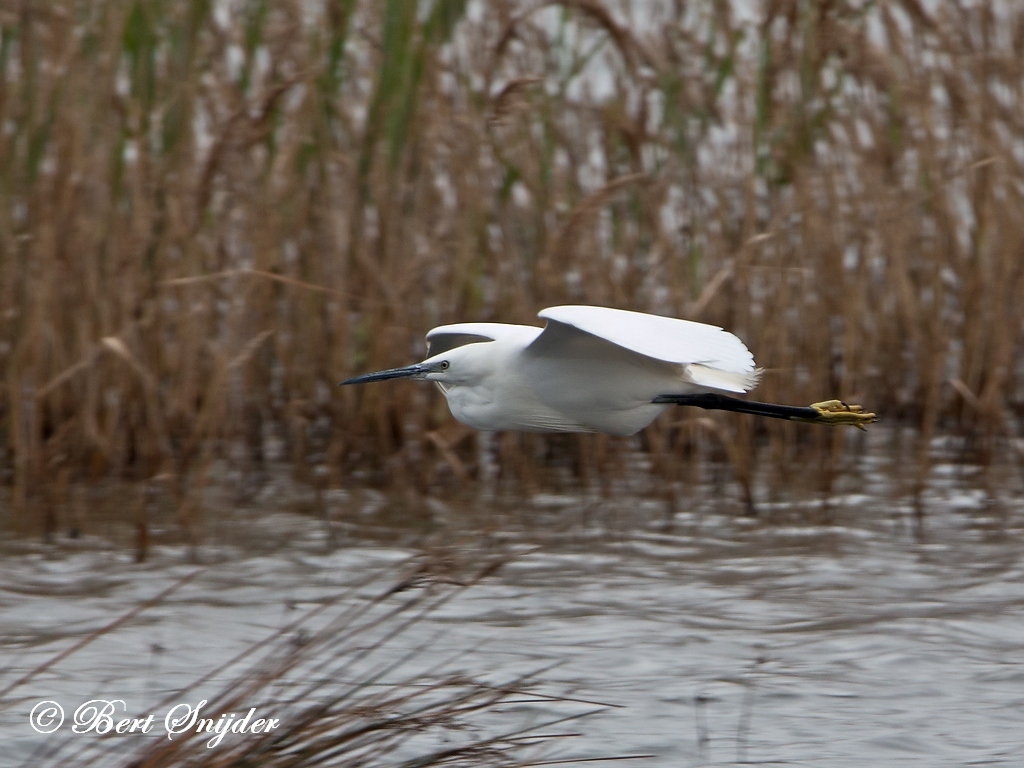
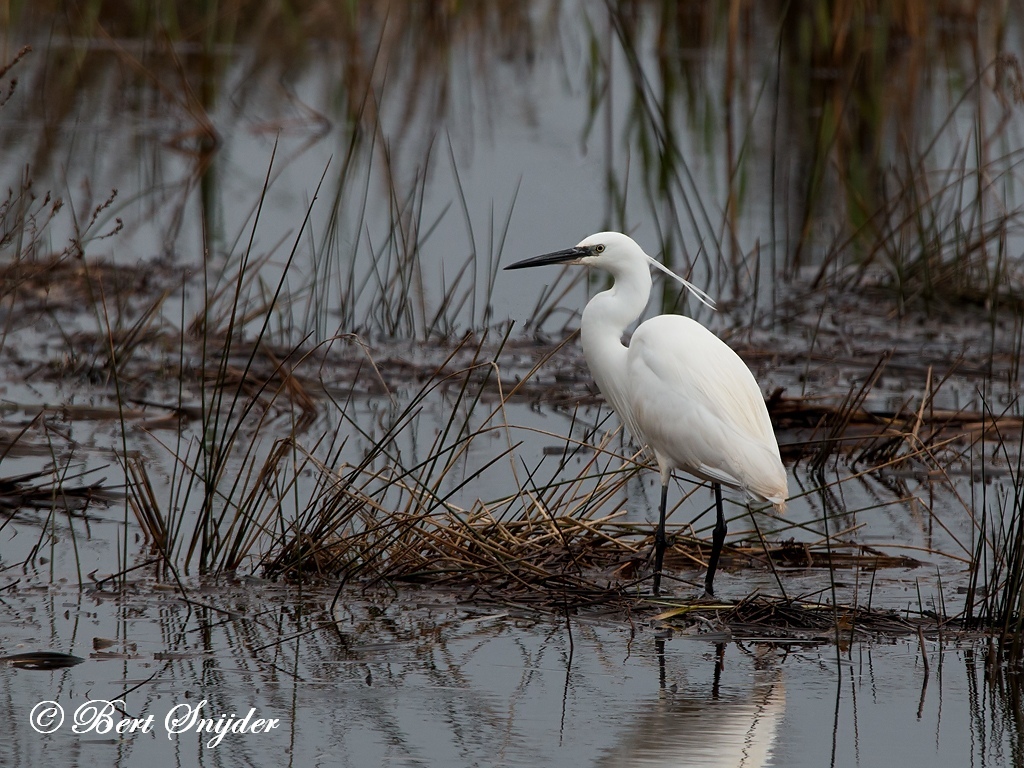
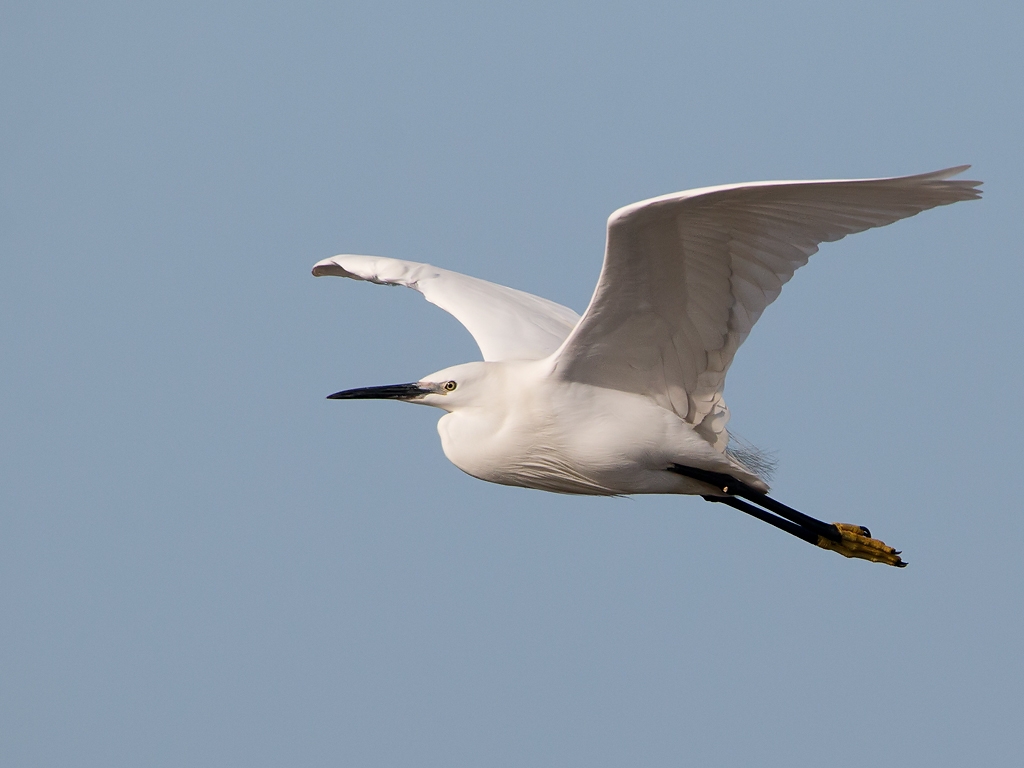
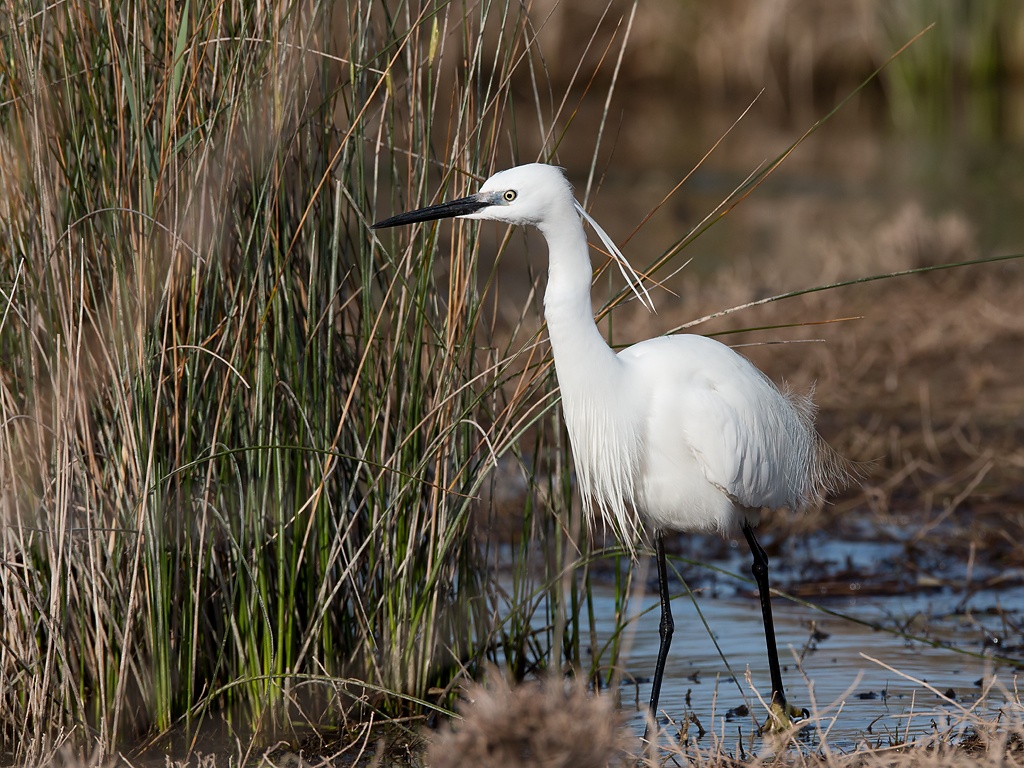
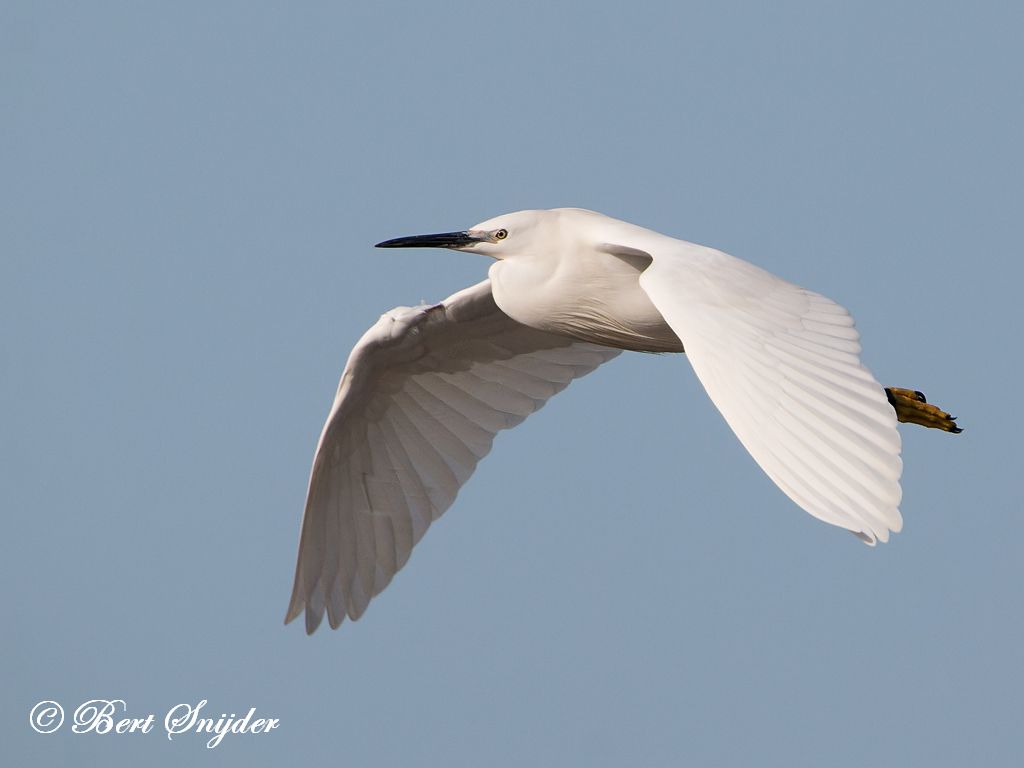

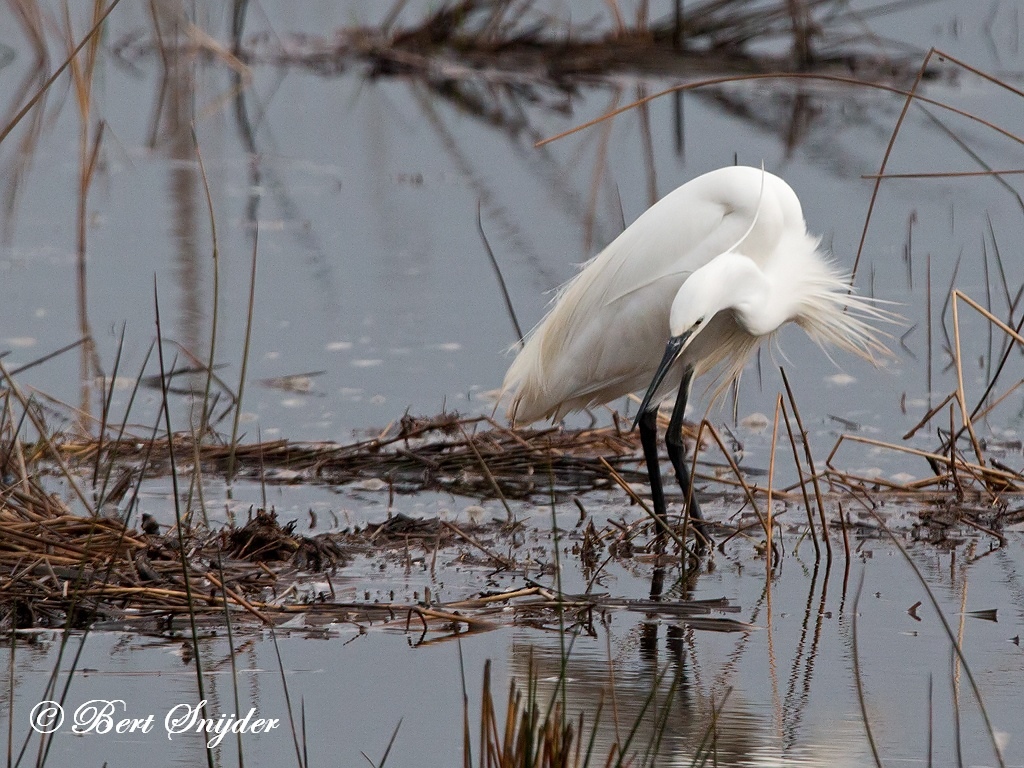
Other synonyms:
Afrikaans: Kleinwitreier
Asturian: Garcia Cande, Garcina
Breton: An herlegon bihan
Catalan: Agró blanc, Martinet blanc
Catalan (Balears): Agró blanc
Czech: volavka støíbøitá, Volavka stríbritá
Welsh: Crëyr bach, Crëyr gwen lleiaf
Danish: Silkehejre
German: Seidenreiher
English: Little Egret
Esperanto: Malgranda egretardeo
Spanish: Garceta Comun, Garceta Común, Garza Chiquita, Garza Pequeña
Spanish (Dominican Rep.): Garza Chiquita
Estonian: Siidhaigur
Basque: Lertxuntxo txikia, Martinet blanc
Finnish: Silkkihaikara
Faroese: Silkihegri
French: Aigrette blanche, Aigrette garzette, Garzette blanche, Héron garzette, Petite Aigrette
Irish: Éigrit Bheag
Gaelic: Corra Gheal Bheag
Galician: Garzota, Martinet blanc
Haitian Creole French: Ti Krabye etranje
Hindi: Chinna vellai kokku
Croatian: Mala Bijela Caplja, Mala Bijela ?aplja
Hungarian: Kis kócsag
Indonesian: Bango putih kecil, Kuntul kecil, Kuntul perak kecil
Icelandic: Bjarthegri
Italian: Garzetta, Garzetta comune
Japanese: kosagi, Ko-sagi
Cornish: Kerghyth penvagas lyha
Kwangali: Samunkoma
Latin: Ardea garzetta, Egretta garzetta
Mamasa: korong ula
Malay: Bangau Kecil
Maltese: Agrett Abjad
Dutch: Kleine Zilverreiger
Norwegian: Silkehegre
Polish: czapla nadobna
Portuguese: garça branca pequena, Garça-branca-pequena
Portuguese (Brazil): Garça-negra
Romansh: Irun da saida
Russian: Malaya Belaya Tsaplya
Northern Sami: Silkeháigir
Slovak: beluša malá, volavka striebristá, volavka striebristá (beluša malá)
Slovenian: mala bela caplja, mala belacaplja
Albanian: Çapka e bardhë e vogël
Serbian: Mala bela caplja
Sotho, Southern: Leholosiane
Swedish: Silkeshäger
Swahili: Dandala
Zulu: iNgekle
Travel Birdwatching Holiday Alentejo, Vacation Portugal for birders guided birdwatching Tours and Trips.